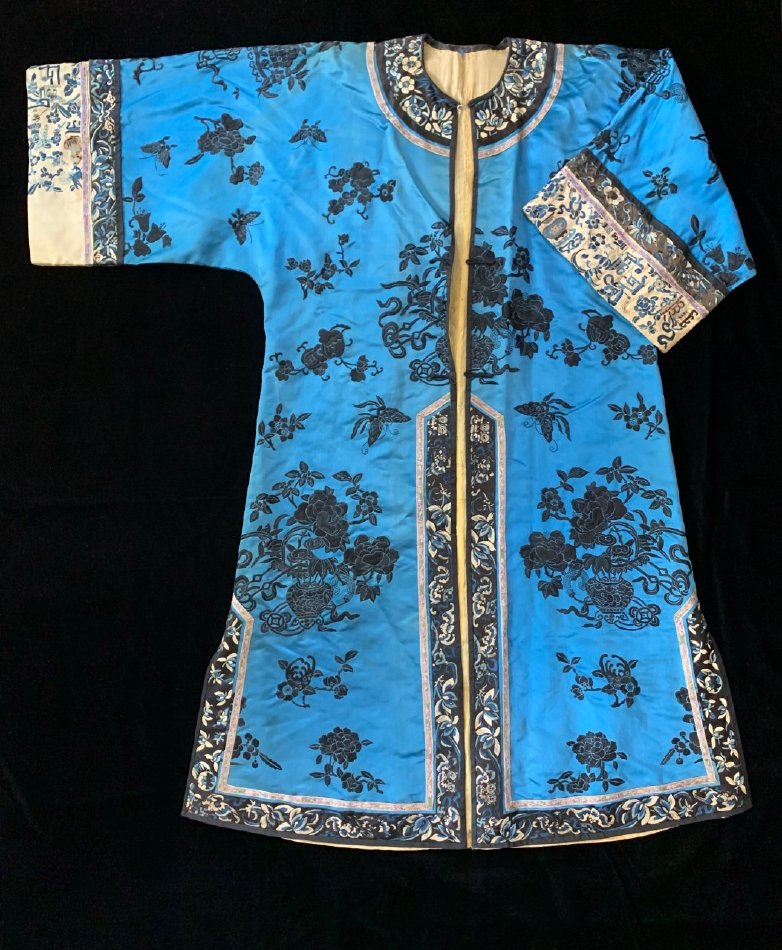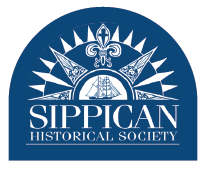
Blue Qing Robe
Contributed by Abigail Field, Executive Assistant
In the 19th century, the whaling trade served as an integral part of the South Coast’s economic web. The towns of Marion, Mattapoisett, and Rochester all held important roles in this trade: Rochester provided timber, Mattapoisett provided its expert shipbuilders, and Marion was home to a number of whaling captains. However, Marion boasted a number of merchant ship captains as well, the most famous example being the Mary Celeste. It was through both whaling and commerce that Marion was able to cement itself in the history of international trade.
The international trading rights America enjoyed with the British West Indies, as well as with England, its favored trade partner, ended after the Revolutionary War. However, the independence the United States had fought for meant that previous trade and industry restrictions imposed by the British were also lifted. While the United States still upheld trade in the Mediterranean, it was greatly obstructed by piracy. It was this set of circumstances that opened the very lucrative door to trade between America and China. The first period of this commerce lasted from roughly 1783 to 1844, after which the United States imposed upon China a relatively unequal treaty (the Treaty of Wanghia) that lasted until 1943. It was during this latter period that today’s Treasure from the Archives hails.
This beautiful late Qing Dynasty robe, also called an ao or shan, dating from around 1900-1910, showcases not only the ramifications of international exchange, but also the political climate in China. The Qing Dynasty was unique as one of the only two dynasties in Chinese history where the rulers were not of the majority Han ethnic group, but instead were of the nomadic Manchu ethnic group, a minority. Han and Manchu cultures and styles of dress were very different; however, due to laws imposed by the majority Manchu, Han men were required to adopt the Manchu clothing style. We can see the greatest cultural differences in clothing by comparing how Han and Manchu women dressed. Due to the great differences between Manchu and Han women’s dress during this period, we can be certain that this informal short robe was once owned by a Han woman.
The intricate blue silk satin garment closes down the front, rather than across the chest and to the side as its predecessors did in previous decades. Entirely hand embroidered and hand sewn, the robe shows a variety of floral motifs, along with vases and the occasional butterfly. It was not uncommon for textile goods such as this to end up in homes around eastern Massachusetts due to the close ties our state has historically had with China. Canton, MA, for example, was named after Canton, China due to the belief by one of the town founders that the two cities are antipodal (they are not). In Salem, MA, a number of buildings remain that were built specifically for the import/export trade with China. Closer to home, Marion resident John Wisner, one of the founders of the SHS, hailed from a family deeply involved in the China trade, which generated an economic relationship that significantly bolstered the American economy.

